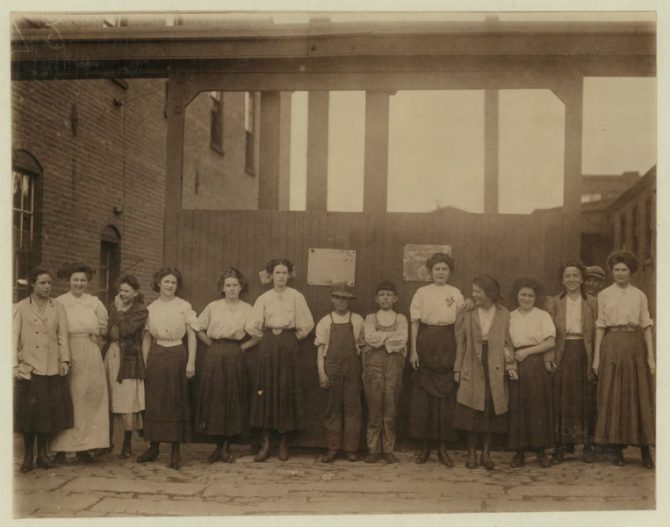By Robert Hodge
In August of 1889, C. W. Wilder of New York and George F. Wheeler of Baltimore were introduced by J. R. Clarke of Baltimore, owner of the Fredericksburg Water Power Company, to the Corporation Council of Fredericksburg.
In return for the donation of an acre of land and exemption from city taxes for a period of ten years, the men agreed to construct and put into operation within six months a silk factory that would employ up to 200 girls and women from age 15 upward. It was also understood that they would enlarge the works when the opportunity demanded.
After some committee study and after the Council members had had their talk "as they are bound to do or bust," the terms were agreed to. The acre of land to be purchased for about $2,000 was the old brickyard adjoining the woolen factory. By October, George W. Wroten, who had the contract for the building of the silk factory, was ready to work. Benjamin Bowering had the contract for opening the canal to the factory and putting in the water wheel.
By December, Mr. Bowering's work was nearly completed and John Sacrey, in charge of the works, was given great credit for the fidelity of the brickwork.
Operations were to have begun on May 1, but machinery was still arriving by railroad and being hauled by Hayden and Amiss. It was reported that the first machinery was put into operation on Monday, June 30, 1890, but with only eight employees.
Five months later the plant was under the superintendency of Mr. and Mrs. S. E. Conant from Stonington, Connecticut. It was now pointed out to the visiting reporter that the factory, which now employed 30 operators, 18 of whom were females, was really not a silk manufactory, but a silk "throwing" factory.
The raw silk hanks (prepared in Italy from the silk cocoon and imported duty-free at $2,500 each) were washed, dried, and taken to one of the 16 first-time spinners where the nimble fingers of the female operators were kept busy tying the delicate fibers when they were broken.
The machine twisted the fibers, which were then taken to one of the 13 second-time spinners, followed by one of the five matchers. The fibers then went to one of the two winders where they were wound into skeins and shipped to the silk maker. The mill also prepared organzine, used for warps, and trams for filling.
Everything was neat and bright as a new pin. The rooms were lighted with electricity and heated with steam. An office addition was under construction.
By April of 1891, the mill employed 46 persons and was proposing soon to double its workforce. These plans were interrupted in the early hours of the morning of June 22, 1891.
Persons coming and going to Falmouth were surprised to find the road filled with stone and rubbish and the meadow below flooded with sand and stone as if another "Flood of '89" had come and gone during the night. The water in the race had broken through at the head of the forebay. It washed away the foundation of the boiler room and caused the boiler to break loose from its fastening and fall into the breach made by the rushing waters.
Superintendent Wheeler estimated the damage at between one and two thousand dollars besides the stoppage of the mill for the time required for repairs -- about a month. True to his estimate, the mill started up on July 27.
In October, the corner of 17 B (streets were numbered and lettered at that time) found 20 laborers hauling brick and dirt, digging a tunnel 46 feet deep and preparing a suitable place for the silk mill's new water wheel. The 100 employees of the mill, with the addition of the construction force, made this the liveliest looking place in Fredericksburg.
This article originally appeared in the November 1981 issue of The Fredericksburg Times magazine and is used here with the author's permission.


